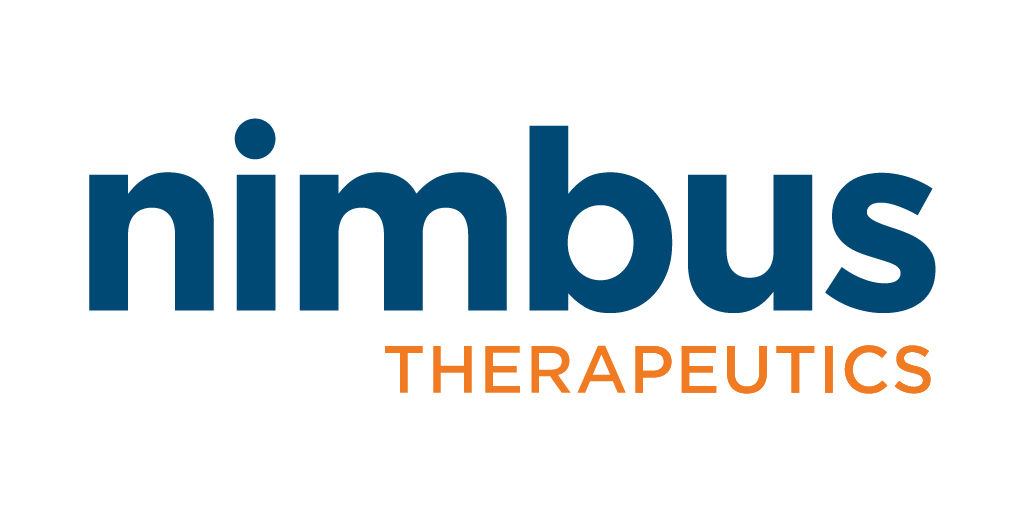预约演示
更新于:2025-05-07
Carboxylases
更新于:2025-05-07
基本信息
别名- |
简介- |
关联
35
项与 Carboxylases 相关的药物靶点 |
作用机制 PC抑制剂 |
在研机构 |
原研机构 |
在研适应症 |
最高研发阶段临床2期 |
首次获批国家/地区- |
首次获批日期1800-01-20 |
作用机制 ACC1抑制剂 [+1] |
最高研发阶段临床2期 |
首次获批国家/地区- |
首次获批日期1800-01-20 |
作用机制 ACC1抑制剂 [+3] |
非在研适应症- |
最高研发阶段临床2期 |
首次获批国家/地区- |
首次获批日期1800-01-20 |
45
项与 Carboxylases 相关的临床试验NCT05665751
A Phase 2a Study Evaluating the Safety, Tolerability, and Efficacy of TLC-3595 in Subjects With Insulin Resistance
This Phase 2a study is designed to evaluate the safety, tolerability, effectiveness, and pharmacokinetics (PK) of TLC-3595 in subjects with insulin resistance.
开始日期2023-03-08 |
申办/合作机构 |
NCT05130437
A Phase 1/2, Global, Open-Label, Extension Study to Evaluate the Long-Term Safety and Clinical Activity of mRNA-3927 in Participants Previously Enrolled in the mRNA-3927-P101 Study
The main purpose of this study is to evaluate the long-term safety of mRNA-3927 administered to participants with propionic acidemia (PA) who have previously participated in Study mRNA-3927-P101 (NCT04159103).
开始日期2021-11-09 |
申办/合作机构 |
NCT04881357
Evaluation of Antiplaque and Antigingivitis Effects of the New "Lacer Oros Acción Integral" Mouth Rinse Formulation.
Background; A new mouth rinse formulation ("Lacer Oros Acción Integral", Lacer SA, Barcelona, Spain) has been recently proposed, including O-Cymen-5-ol, potassium nitrate, zinc chloride, dipotassium glycyrrhizate, sodium fluoride, panthenol and xylitol, within its ingredients. Thus, it may be relevant to test the efficacy of this new "Lacer Oros Acción Integral" mouth rinse formulation in a RCT.
Primary Objective: The primary objective of this RCT will be to evaluate the antiplaque/antigingivitis effects of the test mouth rinse.
Population: Consecutive subjects in supportive periodontal therapy (SPT) will be screened at the Post-Graduate Periodontal Clinic in the University Complutense, Madrid, and enrolled in the clinical trial if they are periodontitis patients, already enrolled in a SPT, for at least 6 months, systemically healthy, with moderate gingival inflammation and complains of dentin hypersensitivity.
Study design: pilot, parallel, double-blind, randomized, placebo-controlled, 12-week, clinical trial
Intervention: The experimental group will use three times daily a provided manual toothbrush with a sodium fluoride dentifrice, followed by the use of the test mouth rinse (Lacer Oros Acción Integral - new formula, Barcelona, Spain). The control group will use three times daily a provided manual toothbrush with a sodium fluoride dentifrice, followed by the use of the control mouth rinse (Lacer Oros Acción Integral - new formula, without active ingredients, Barcelona, Spain).
Visits: Screening, baseline, 2 and 12 weeks.
Outcomes: Periodontal clinical outcomes (plaque levels, gingival condition, probing pocket depth), Stainign, Microbiological outcomes (culture and qPCR). Patient reported outcomes, compliance, adverse effects.
Primary Objective: The primary objective of this RCT will be to evaluate the antiplaque/antigingivitis effects of the test mouth rinse.
Population: Consecutive subjects in supportive periodontal therapy (SPT) will be screened at the Post-Graduate Periodontal Clinic in the University Complutense, Madrid, and enrolled in the clinical trial if they are periodontitis patients, already enrolled in a SPT, for at least 6 months, systemically healthy, with moderate gingival inflammation and complains of dentin hypersensitivity.
Study design: pilot, parallel, double-blind, randomized, placebo-controlled, 12-week, clinical trial
Intervention: The experimental group will use three times daily a provided manual toothbrush with a sodium fluoride dentifrice, followed by the use of the test mouth rinse (Lacer Oros Acción Integral - new formula, Barcelona, Spain). The control group will use three times daily a provided manual toothbrush with a sodium fluoride dentifrice, followed by the use of the control mouth rinse (Lacer Oros Acción Integral - new formula, without active ingredients, Barcelona, Spain).
Visits: Screening, baseline, 2 and 12 weeks.
Outcomes: Periodontal clinical outcomes (plaque levels, gingival condition, probing pocket depth), Stainign, Microbiological outcomes (culture and qPCR). Patient reported outcomes, compliance, adverse effects.
开始日期2021-09-04 |
申办/合作机构 |
100 项与 Carboxylases 相关的临床结果
登录后查看更多信息
100 项与 Carboxylases 相关的转化医学
登录后查看更多信息
0 项与 Carboxylases 相关的专利(医药)
登录后查看更多信息
21,630
项与 Carboxylases 相关的文献(医药)2025-12-31·Gut Microbes
Creatine-mediated ferroptosis inhibition is involved in the intestinal radioprotection of daytime-restricted feeding
Article
作者: He, Yongwu ; Zhao, Gaomei ; Ouyang, Xue ; Gao, Jining ; Li, Chenwenya ; He, Yingjuan ; Wang, Shaobo ; Wang, Junping ; Chen, Yin ; Han, Songling ; Zhao, Jinghong ; Wang, Cheng
2025-12-31·Animal Biotechnology
Quercetin alleviates metabolic-associated fatty liver disease by tuning hepatic lipid metabolism, oxidative stress and inflammation
Article
作者: Jiang, Ling ; Yi, Rong ; Chen, Huan ; Wu, Shuwu
2025-12-31·Emerging Microbes & Infections
Mechanisms underlying delayed loss of HBeAg and HBV DNA following HBsAg seroclearance in PEG-IFNα treated patients of chronic hepatitis B
Article
作者: Jiang, Bei ; Li, Minghui ; Cao, Zhenhuan ; Chen, Xiangmei ; Guan, Guiwen ; Zhao, Kaitao ; Lu, Fengmin ; Guo, Yifei ; Gu, Zhiqiang ; Xia, Yuchen ; Zhang, Jiming ; Wang, Lin ; Gu, Weilin ; Yuen, Man-fung
277
项与 Carboxylases 相关的新闻(医药)2025-05-05
·生物世界
撰文丨王聪编辑丨王多鱼排版丨水成文对乙酰氨基酚的过度使用是急性肝损伤(ALI)的主要诱因。尽管急性肝损伤与个体间微生物组构成的差异有关,但其机制仍不清楚。2025 年 5 月 2 日,南方医科大学中医药学院龚神海、南方医科大学广东省人民医院赵志斌、南方医科大学珠江医院刘占国、第三军医大学新桥医院肖卫东团队合作,在 Cell 子刊 Cell Host & Microbe 上发表了题为:Cohabitation facilitates microbiome shifts that promote isoflavone transformation to ameliorate liver injury 的研究论文。该研究发现,异性同居会重塑肠道菌群,增加肠道细菌 Rikenella microfusus 来减轻急性肝损伤(ALI),为预防和治疗急性肝损伤提供了新的科学依据。在这项最新研究中,研究团队证明了雄性和雌性小鼠之间肠道微生物群的水平传播会影响急性肝损伤(ALI),并且确定了由肠道细菌 Rikenella microfusus 介导的异黄酮转化是急性肝损伤严重程度的决定因素。Rikenella microfusus 通过分泌β-半乳糖苷酶,将饮食中的异黄酮糖苷转化为具有生物活性的鹰嘴豆芽素A(Bio-A),大幅提升其在肠道的吸收效率,从而发挥重要的肝脏保护效应。Rikenella microfusus 的单菌定植减轻了对乙酰氨基酚过量引起的急性肝损伤的严重程度。通过遗传或化学手段抑制β-半乳糖苷酶,会阻止 Bio-A 的释放,并消除 Rikenella microfusus 的肝脏保护作用。Bio-A 直接与丙酮酸羧化酶(PC)和丙酰辅酶 A 羧化酶 α 亚基(PCCA)结合,增强三羧酸循环,并促进肝细胞内具有保护作用的谷胱甘肽的合成。此外,免疫组织化学分析显示肝衰竭患者的肝脏中 PC 和 PCCA 的表达降低。该研究的核心发现:共同生活通过增加 Rikenella microfusus 来减轻急性肝损伤;Rikenella microfusus 的 β-半乳糖苷酶促进饮食中 Bio-A 的吸收;Bio-A 通过提高肝细胞中 PC 和 PCCA 的水平来为三羧酸循环提供动力;三羧酸循环的上调促进谷胱甘肽合成并保护免受急性肝损伤。总的来说,这项研究发现,异性同居会重塑肠道菌群,增强肠道细菌 Rikenella microfusus 介导的异黄酮 Bio-A 转化,进而激活肝脏三羧酸循环,在雄性中发挥显著的保护作用。这些发现突显了微生物组构成对急性肝损伤(ALI)的影响以及微生物异黄酮吸收减轻急性肝损伤严重程度的能力。该研究不仅揭示了社会行为与健康之间的新联系,也提示通过调节肠道菌群或补充特定代谢产物,可能成为预防和治疗急性肝损伤的新策略。论文链接:https://www.cell.com/cell-metabolism/abstract/S1550-4131(25)00217-7设置星标,不错过精彩推文开放转载欢迎转发到朋友圈和微信群 微信加群 为促进前沿研究的传播和交流,我们组建了多个专业交流群,长按下方二维码,即可添加小编微信进群,由于申请人数较多,添加微信时请备注:学校/专业/姓名,如果是PI/教授,还请注明。点在看,传递你的品味
微生物疗法
2025-04-30
·米内网
精彩内容近日,CDE官网显示,东阳光药申报的1类新药HEC-007注射液获得临床试验默示许可,包括2型糖尿病、超重或肥胖两项适应症。消化系统及代谢疾病是东阳光药重点布局的领域之一,聚焦糖尿病、肥胖、非酒精性脂肪性肝炎(NASH)等。米内网数据显示,近年来中国三大终端六大市场(统计范围详见本文末)消化系统及代谢药(化药+生物药)销售额均超过2100亿元。据悉,HEC-007注射液是一种脂肪酸侧链修饰胰高血糖素样肽(GLP-1)/胰高血糖素(GCG)/葡萄糖依赖性促胰岛素多肽(GIP)三靶点多肽新药,通过协同激活多个受体,进一步强化减重并改善血糖血脂等代谢指标。目前国内外尚无同类产品获批上市。全球在研新药中,礼来的retatrutide处于III期临床,联邦制药的UBT-251、韩美制药的HM-15211等处于II期临床。米内网数据显示,近年来中国三大终端六大市场消化系统及代谢药(化药+生物药)销售额均超过2100亿元,但受集采等影响,其市场规模呈逐年下滑态势。近年来中国三大终端六大市场消化系统及代谢药(化药+生物药)销售情况(单位:万元)来源:米内网格局数据库消化系统及代谢药涵盖14个治疗亚类,糖尿病用药、治疗与胃酸分泌相关疾病的药物、维生素类依次位列前三,2024年市场份额分别超过31%、14%、12%。在消化及代谢疾病领域,东阳光药有14款新药在国内处于获批临床及以上阶段(不含已上市品种),重点布局糖尿病、肥胖、NASH等细分病种,覆盖全系列胰岛素(速效、短效、长效及预混)、SGLT2抑制剂、GLP-1多系列药物等,满足多样化治疗需求。东阳光药国内在研的消化系统及代谢药新药来源:米内网综合数据库胰岛素步入收获期,5款已获批上市。此外,德谷胰岛素注射液提交NDA,原研产品2024年在中国三大终端六大市场销售额接近9亿元;德谷门冬双胰岛素注射液步入III期临床,原研产品2024年在中国三大终端六大市场销售额超过15亿元。在具有明显临床优效性的GLP-1RA方面,1类新药HEC88473正在开展II期临床,为国内研发进展最快的GLP-1/FGF21双重激动剂;生物类似药利拉鲁肽注射液步入III期临床,该产品2024年在中国三大终端六大市场的销售额超过17亿元。在具有较大临床需求的NASH药物方面,东阳光药布局了FXR激动剂、GLP-1/FGF21双靶激动剂、THR-β激动剂、ACC抑制剂等主流靶点。其中,HEC96719片(FXR激动剂)、HEC88473注射液(GLP-1/FGF21双靶激动剂)已处于II期临床,HEC169584胶囊(THR-β激动剂)、HEC138671片已获批临床。资料来源:米内网数据库、CDE官网等注:米内网《中国三大终端六大市场药品竞争格局》,统计范围是:城市公立医院和县级公立医院、城市社区中心和乡镇卫生院、城市实体药店和网上药店,不含民营医院、私人诊所、村卫生室,不含县乡村药店;上述销售额以产品在终端的平均零售价计算。数据统计截至4月30日,如有疏漏,欢迎指正!免责声明:本文仅作医药信息传播分享,并不构成投资或决策建议。本文为原创稿件,转载文章或引用数据请注明来源和作者,否则将追究侵权责任。投稿及报料请发邮件到872470254@qq.com稿件要求详询米内微信首页菜单栏商务及内容合作可联系QQ:412539092【分享、点赞、在看】点一点不失联哦
临床3期临床2期上市批准申请上市临床1期
2025-04-29
·VIP说
胰腺癌(PC)是一种高度恶性的消化系统肿瘤,尤其是胰腺导管腺癌(PDAC),具有高侵袭性和预后极差,因此被称为“癌中之王”。 1 胰腺癌概述 1.1 流行病学胰腺癌对于多数患者而言是致命疾病,中位生存期约为4个月,5年生存率为13%。根据2022年全球癌症数据统计,胰腺癌发病率居全球恶性肿瘤第12位,癌症死亡人数居第6位(见图1)。根据2024年中国癌症数据统计,胰腺癌发病新发病例数为11.87/万例,死亡人数为10.63/万例。图1 2022年全球癌症统计来源:Freddie Bray, et al. CA Cancer J Clin. 2024胰腺癌恶性程度较高,进展迅速,但起病隐匿,早期症状不典型,临床就诊时大部分患者已属于中晚期。传统的手术切除和化疗虽仍为主要治疗手段,但术后复发率高、预后不佳等问题仍未得到有效解决。1.2 发病机制胰腺癌是最常见的胰腺实体肿瘤(占比>95%),起源于正常腺上皮经癌前病变发展为浸润癌。约95%肿瘤源于胰腺上皮内瘤变(PanIN)。其他癌前病变包括胰腺囊肿(如IPMN和黏液性囊腺瘤)。约半数胰腺癌伴发IPMN患者的浸润癌并非源自IPMN。普通人群胰腺囊肿发生率16%,IPMN最常见且恶变风险最高。低危特征IPMN 10年恶变累积发生率8%,高危特征者可达25%。胰腺癌存在多种分子改变,涉及癌基因激活、抑癌基因失活、DNA损伤修复基因变异等。91%为体细胞突变,9%存在胚系突变。常见体细胞突变包括KRAS(~88%)、TP53(61-74%)、CDKN2A(16-44%)和SMAD4(20-22%)。KRAS突变是胰腺癌发生的关键遗传事件,90%以上低级别PanIN即存在,在肿瘤演进中持续激活,促进增殖、存活、迁移和侵袭。KRAS蛋白通过影响肿瘤间质和微环境,在转移和化疗耐药中起重要作用。转录组分析发现多个独特亚型,其中基底样和经典型分类最具预后和化疗反应预测价值。基底样肿瘤富集上皮-间质转化(EMT)、细胞周期进展和TGF-β信号通路,预后更差。EMT参与癌细胞重编程,促进循环播散和免疫逃逸。胰腺癌以促纤维增生性间质为特征,含大量细胞外基质、脉管系统和癌相关成纤维细胞,致间质高压阻碍化疗药物递送。癌细胞沿血管、神经和胶原结构浸润,神经侵犯(62%)和淋巴血管侵犯(54%)率高,与不良预后相关。1.3 胰腺癌的起源和发病胰腺导管腺癌(PDAC)起源于胰腺的外分泌组织。研究表明,腺泡细胞和导管细胞在获得致癌突变和/或肿瘤抑制功能失活后,均可能成为PDAC的起源细胞。致癌基因KRAS的激活突变可见于两种最常见的PDAC前驱病变:胰腺上皮内瘤变(PanINs)和囊性病变——导管内乳头状黏液性肿瘤(IPMNs)。除KRAS突变外,编码G蛋白α亚基Gαs的基因GNAS的激活突变以及肿瘤抑制基因RING型E3泛素连接酶(RNF43)的功能失活也与IPMNs的发生相关。随着这些前驱病变从低级别向高级别进展,可观察到肿瘤抑制基因CDKN2A的缺失或染色质重塑复合物SWI/SNF组分的丢失。进一步伴随前驱病变向PDAC的演进,肿瘤抑制基因SMAD4或TP53的缺失或失活突变相继出现。此外,基于RNA转录组特征,PDAC被划分为多个亚型。其中,“经典型(Classic)”和“基底样型(Basal-like)”为两大共识亚型,而“混合型(Hybrid)”则用于描述兼具两者特征的病例。图2 胰腺癌的起源和发病来源:Christopher J Halbrook, et al. Cell. 20231.4 组织学分型及解剖学分期胰腺癌WHO组织学分型(2019版):起源于胰腺导管上皮的恶性肿瘤:导管腺癌、腺鳞癌和鳞癌、胶样癌、肝样腺癌、髓样癌、浸润性微乳头状癌、印戒细胞癌、未分化癌(间变型/肉瘤样型)、未分化癌伴破骨细胞样巨细胞、其他。起源于非胰腺导管上皮的恶性肿瘤:腺泡细胞癌、姨母细胞癌、实性-假乳头状肿瘤、胰腺神经内分泌肿瘤。胰腺癌的组织学亚型中,PDAC是最常见的外分泌肿瘤。超过90%的胰腺癌为PDAC。胰腺癌的解剖分期详见图3。图3 胰腺癌的解剖学分期来源:Thomas F Stoop, et al. Lancet. 2025胰腺导管腺癌(PDAC)起源于胰腺的外分泌组织。研究表明,腺泡细胞和导管细胞在获得致癌突变和/或肿瘤抑制功能失活后,均可能成为PDAC的起源细胞。致癌基因KRAS的激活突变可见于两种最常见的PDAC前驱病变:胰腺上皮内瘤变(PanINs)和囊性病变——导管内乳头状黏液性肿瘤(IPMNs)。除KRAS突变外,编码G蛋白α亚基Gαs的基因GNAS的激活突变以及肿瘤抑制基因RING型E3泛素连接酶(RNF43)的功能失活也与IPMNs的发生相关。随着这些前驱病变从低级别向高级别进展,可观察到肿瘤抑制基因CDKN2A的缺失或染色质重塑复合物SWI/SNF组分的丢失。进一步伴随前驱病变向PDAC的演进,肿瘤抑制基因SMAD4或TP53的缺失或失活突变相继出现。此外,基于RNA转录组特征,PDAC被划分为多个亚型。其中,“经典型(Classic)”和“基底样型(Basal-like)”为两大共识亚型,而“混合型(Hybrid)”则用于描述兼具两者特征的病例。 2 胰腺癌治疗的进展与挑战 手术是目前胰腺癌能获得治愈的唯一机会,而大多数胰腺癌患者在晚期被诊断时已经无法手术切除或存在转移性疾病。即使接受手术切除,近3/4 PDAC患者会在两年内复发,提示切除术后仍存在微转移灶。2.1 转移性胰腺癌化疗的关键3期研究结果对于转移性胰腺癌患者,化疗是标准治疗方案,首选方案为FOLFIRINOX(改良氟尿嘧啶+亚叶酸+伊立替康+奥沙利铂)和吉西他滨-白蛋白结合型紫杉醇。与单药吉西他滨相比,FOLFIRINOX和吉西他滨-白蛋白紫杉醇均显著改善生存:FOLFIRINOX组中位总生存期为11个月 -,1年生存率为48%;吉西他滨-白蛋白紫杉醇组中位总生存期为9个月,1年生存率为35%;而单药吉西他滨的中位总生存期仅约7个月,1年生存率为21-22%。因此,吉西他滨仅推荐用于体能状态较差的患者。尽管证据表明某些胰腺癌亚型对FOLFIRINOX反应更佳,而另一些对吉西他滨类方案更敏感,但尚无随机试验证实这些结论。国际NAPOLI-3试验显示,NALIRIFOX(伊立替康+5-氟尿嘧啶+亚叶酸+奥沙利铂)的疗效优于吉西他滨-白蛋白紫杉醇:NALIRIFOX组中位总生存期为11个月,1年生存率为46%;而吉西他滨-白蛋白紫杉醇组中位总生存期为9个月,1年生存率为40%。然而,目前缺乏直接比较FOLFIRINOX与吉西他滨-白蛋白紫杉醇或NALIRIFOX的随机试验。一项基于个体患者数据的网状Meta分析显示,三者间总生存期无显著差异。若姑息化疗6个月后疾病未进展,可暂停治疗或考虑维持治疗。对于携带BRCA突变的患者,推荐在铂类化疗后使用PARP抑制剂奥拉帕利维持治疗。该方案可延长无进展生存期,但未改善总生存期。若一线FOLFIRINOX治疗期间疾病进展,可考虑二线吉西他滨类化疗。两项随机试验显示二线化疗可带来生存获益:CONKO-003试验表明,对吉西他滨一线治疗进展的晚期患者,奥沙利铂+5-氟尿嘧啶+亚叶酸方案优于单用5-氟尿嘧啶+亚叶酸(中位总生存期6个月 vs. 3个月);NAPOLI-1试验显示,脂质体伊立替康+5-氟尿嘧啶+亚叶酸方案优于单用5-氟尿嘧啶+亚叶酸(中位总生存期6个月 vs. 4个月)。然而,PRODIGE UNICANCER随机试验显示,一线FOLFIRINOX进展后,二线吉西他滨-紫杉醇与单药吉西他滨的中位总生存期均为6个月,无显著差异。图4 转移性胰腺癌化疗的关键随机对照3期试验来源:Thomas F Stoop, et al. Lancet. 20252.2 转移性胰腺癌靶向治疗的关键3期研究结果靶向治疗在胰腺癌领域仍面临重大挑战(见图5)。多款靶向药物关键临床研究结果不佳,未能改善患者OS。而在靶向治疗领域中,随着越来越多的证据表明不同肿瘤亚型对化疗敏感性存在差异(如基底样亚型与经典型亚型、SMAD4A、BRCA1、BRCA2、GATA6等基因特征),临床试验需进一步明确常规基因和转录组肿瘤分型的附加价值,以确定特定化疗方案的敏感性。图5 转移性胰腺癌靶向治疗的关键随机对照3期试验来源:Thomas F Stoop, et al. Lancet. 2025 3 胰腺癌临床研发概览 化疗和手术是PDAC的主要治疗手段。对于晚期/转移性胰腺癌,CSCO指南(2024年版)建议,无论是一线治疗还是二线及以上治疗,均以化疗为主。对于体能较差的MSI-H/dMMR患者,PD-1/PD-L1免疫检查点抑制剂为一线治疗的II级推荐以及二线及以上治疗的III级推荐。NCCN(2025年版)建议,对于体能状态良好(PS 0-1)和FGFR基因改变的局晚期或转移性胰腺癌患者,Erdafitinib被新增为有用的治疗方案。3.1 胰腺癌已获批上市药物目前全球范围内共12款药物获批上市治疗胰腺癌,其中中国有3款,包括:百泰生物的尼妥珠单抗、礼来制药的吉西他滨以及百时美施贵宝制药的丝裂霉素。表1 胰腺癌已获批上市药物百泰生物的尼妥珠单抗和Merus的泽妥珠单抗(Zenocutuzumab)是近两年获批治疗胰腺癌的新药。尼妥珠单抗EGFR为大家熟知的肿瘤靶点,目前已有多款三代EGFR TKIs上市,且第四代EGFR TKIs也在开发中。尼妥珠单抗是全球首个以EGFR为靶点的人源化单克隆抗体,靶向结合肿瘤细胞表面EGFR,抑制EGFR的级联效应及下游信号通路的激活,阻滞细胞周期、促进细胞凋亡,同时尼妥珠单抗为IgG1单克隆抗体,能够诱导体液和细胞免疫,介导ADCC/CDC效应、导致EGFR内吞和降解,进而杀灭肿瘤细胞。尼妥珠单抗最早于2008年在中国获批用于治疗鼻咽癌,后续相继获批胰腺癌和头颈部鳞状细胞癌。表2 尼妥珠单抗已获批适应症尼妥珠单抗于2023年6月在国内获批与吉西他滨联合治疗KRAS野生型局部晚期或转移性胰腺癌(一线治疗),主要基于关键临床NOTABLE(NCT02395016)的研究结果。图6 尼妥珠单抗在胰腺癌中临床研发路径来源:Insight数据库NOTABLE研究是一项前瞻、随机对照、双盲、多中心注册III期临床研究,试验组采用尼妥珠单抗联合吉西他滨治疗,尼妥珠单抗每次400mg,每周1次,直至疾病进展或无法耐受,吉西他滨1000mg/m2,第1、8、15天,每4周一疗程,直至疾病进展或无法耐受;对照组接受安慰剂和吉西他滨治疗。NOTABLE研究按1:1比例入组92例KRAS阴性晚期/转移胰腺癌患者。研究结果(图7)表明,尼妥珠单抗联合吉西他滨组的mOS显著延长,试验组vs对照组为10.9 vs. 8.5个月(HR=0.66,P=0.024)。尼妥珠单抗联合吉西他滨组1年生存率提高63%,试验组vs对照组为43.6% vs 26.8%(p=0.024)。尼妥珠单抗联合吉西他滨组的mPFS显著延长,试验组vs对照组为4.2 vs 3.6个月(HR=0.60,P=0.013)。相比于另一款获批治疗胰腺癌的EGFR靶向药物厄洛替尼(厄洛替尼于2018年在美国已撤回该适应症),尼妥珠单抗的疗效显然更佳。图7 NOTABLE研究疗效终点结果来源:Shukui Qin, MD, et al. J Clin Oncol. 2023在CSCO指南(2024版)中(图8),尼妥珠单抗联合GEM被推荐用于KRAS野生型转移性胰腺癌一线治疗(体能状态较好者为II级推荐;体能状态较差者I级推荐)。图8 2024年CSCO指南转移性胰腺癌一线治疗来源:2024年CSCO指南泽妥珠单抗HER3(人表皮生长因子受体3)是EGFR/HER家族的重要成员,尽管其内在酪氨酸激酶活性极弱,但在肿瘤发生、耐药机制及免疫逃逸中扮演关键角色。HER3缺乏有效的激酶活性,需通过与EGFR、HER2等家族成员形成异源二聚体激活下游信号通路(如PI3K/AKT、MAPK),促进肿瘤细胞增殖、存活和转移。其配体神经调节蛋白(NRG)结合后,HER3的磷酸化位点成为PI3K的强效招募平台,驱动肿瘤耐药性。Zenocutuzumab是目前全球监管机构仅批准一款HER3靶向药。泽妥珠单抗(Zenocutuzumab)是Merus开发的一款靶向HER2/HER3的双抗,于2024年12月获FDA单臂附条件批准上市,用于二线及三线治疗携带NRG1基因融合晚期、不可切除或转移性非小细胞肺癌;或用于二线及三线治疗携带NRG1基因融合晚期、不可切除或转移性胰腺腺癌。这是FDA首次批准针对患有NRG1基因融合的NSCLC或胰腺癌患者的系统性治疗。Zenocutuzumab同时靶向HER2和HER3,阻断NRG1与HER3结合及二聚体形成,抑制PI3K/AKT通路并介导抗体依赖性细胞毒性(ADCC)。见图9。NRG1融合是什么?NRG1基因编码的神经调节蛋白1是ERBB受体激酶的配体,通过HER/ErbB家族受体酪氨酸激酶转导其信号。NRG1基因融合会引起ERBB3/HER3过度活化,促进肿瘤发展和癌细胞存活。NRG1融合在胆囊癌、胰腺癌、卵巢癌和肺癌中较为常见。其中,在胰腺癌中约为0.5%,在非小细胞肺癌中约为0.3%。图9 NRG1融合信号传导和泽妥珠单抗作用机制来源:Jan Gerlach, et al. AACR. 2021泽妥珠单抗的获批主要基于一项1/2期的关键研究(eNRGy试验,NCT02912949)的研究结果。eNRGy研究是全球、开放标签、多中心、1/2期试验,入组携带NRG1融合的局部晚期、不可切除或转移性实体瘤患者。入组患者每两周静脉注射750 mg泽妥珠单抗,直至疾病进展。研究的主要终点为研究者评估的ORR。根据2025年发表在新英格兰杂志中的数据分析(图10-11),eNRGy试验目前共纳入204例患者,包括12种肿瘤类型。在数据截止日期前至少24周纳入的158例有可测量病变的患者中,ORR为30%(95%CI:23%,37%),mDOR为11.1个月(95%CI:7.4,12.9)。多种肿瘤类型均观察到缓解。在存在可测量病灶的93例患有非小细胞肺癌患者中,研究者评估的ORR为29%(95% CI:20%,39%),mDOR为12.7个月(95%CI:7.4,20.4)。在36例可评估的胰腺癌(PDAC,KRAS野生型)患者中,研究者评估的ORR为42%(95%CI:25%,59%),mDOR为7.4个月(95%CI:4.0,11.2)。图10 Zenocutuzumab在NRG1阳性癌症中的疗效来源:Alison M Schram, et al. N Engl J Med. 2025图11 Zenocutuzumab在NRG1阳性癌症中的ORR和mDOR结果来源:Alison M Schram, et al. N Engl J Med. 20253.2 胰腺癌药物临床研发现状根据Insight数据库统计(图12),目前全球范围内,共12款药物获批上市治疗胰腺癌,有1款申请上市中(非积极状态),48款处于临床3期,8款处于临床2/3期,273款处于临床2期,294款处于临床1/2期,504款处于临床1期。处于2/3期及3期临床的药物以化药为主,其次为单抗和疫苗;靶向VEGFR2、PD-1、KIT和PDGFR的药物较多。图12 胰腺癌中处于2/3期及3期临床的药物类型及靶点信息来源:Insight数据库从药物类型上看,处于早期临床的药物还是以化药为主,其次为单抗、ADC、疫苗、CAR-T以及双抗,可以看出近年来胰腺癌的药物研发方向开始转向生物药。从靶点方面看,以CLDN-18.2、MSLN以及PD-1为主,此外,靶向KRAS突变的药物也是研发热门。见图13。图13 胰腺癌中处于1期、1/2期及2期临床的药物类型及靶点信息来源:Insight数据库 4 胰腺癌治疗困难重重针对晚期或转移性胰腺癌,目前临床上仍缺乏有效治疗手段。免疫治疗近年来在多个癌种中疗效颇佳,然而胰腺癌因固有的免疫逃逸特性及高度抑制的肿瘤微环境(TME),导致既往免疫治疗效果欠佳。尤其是胰腺导管腺癌,因其免疫功能障碍和对免疫疗法的抗拒而广泛被认为是一个治疗难题。胰腺癌的基因组驱动因素在早前已被证实。超过90% PDAC患者存在KRAS突变。KRAS一直被认为是难成药靶点,近年来针对 KRASG12C和KRASG12D的等位特异性抑制剂及泛Ras抑制剂的研发为 KRAS 突变肿瘤带来希望。KRASG12C共价抑制剂已获批用于非小细胞肺癌,但在PDAC中反应率仅21%且疗效短暂,耐药机制涉及细胞自主和非自主途径。 KRAS抑制剂在胰腺癌中的研发仍将面临类似挑战。联合用药可能是极具前景的治疗策略。除KRAS外,TP53、SMAD4和CDKN2A的功能缺失突变也主导PDAC基因组。其他主要驱动基因赋予肿瘤独特表型:CDKN2A缺失常伴随9p21染色体干扰素簇缺失,导致免疫“冷”肿瘤和对免疫治疗耐药;SMAD4缺失与不良预后和转移相关;TP53突变通过基因组不稳定性、代谢重编程和转移倾向促进肿瘤进展。除小分子抑制剂外,治疗性疫苗、蛋白降解剂、外泌体siRNA和工程化T细胞受体疗法等新策略正在探索中。在BRCA1/2种系突变患者中,PARP抑制剂奥拉帕利显著延长无进展生存,但未改善总生存。近期研究提示BRCA1/2和PALB2双等位缺失患者也可受益,相关试验正在扩展至辅助治疗和联合免疫治疗中。改善胰腺癌治疗的五大优先领域基因组改变:针对突变RAS的多种直接靶向策略正在进入临床实践,通过基因测序可识别其他可干预的遗传驱动因素,用于有效治疗特定亚群患者。 代谢调控:胰腺癌细胞代谢重编程为选择性靶向肿瘤细胞提供了机会。通过阻断肿瘤应对营养失调的清除、再循环及代谢交叉对话机制,可切断癌细胞能量供应并克服治疗耐药。 肿瘤微环境重塑:靶向间质成纤维细胞或直接调控细胞外基质可改善药物渗透,但需保留抑制癌细胞迁移的天然屏障。平衡微环境“促癌”与“抑癌”作用是关键。 免疫治疗突破:解除肿瘤内细胞互作的免疫抑制、重编程髓系细胞功能可恢复抗肿瘤免疫。需联合增强抗原呈递、促进细胞毒性T细胞浸润及防止T细胞耗竭等策略。 创新临床试验设计:临床研究应优先验证高潜力疗法,通过分子标志物动态评估患者反应,并对无效病例快速切换治疗方案。多维度干预策略的整合是成功关键。图14 胰腺癌的治疗策略来源:Christopher J Halbrook, et al. Cell. 2023小结手术是目前胰腺癌能获得治愈的唯一机会,而大多数胰腺癌患者在晚期被诊断时已经无法手术切除或存在转移性疾病。针对晚期或转移性胰腺癌,目前临床上仍缺乏有效治疗手段。虽然胰腺癌治疗仍困难重重。但近年来涌现了针对胰腺癌分子亚型及耐药的新疗法,如DNA损伤修复、合成致死策略、肿瘤疫苗、KRAS抑制剂、ATM抑制剂,以及靶向Claudin 18.2、MET、NTR1等。胰腺癌的治疗正在经历由传统化疗进入个体化和精准化治疗的转变,针对不同亚群体的靶向治疗药物在持续开发。临床上胰腺癌的缺药局面加速了新药好药的上市步伐。如泽妥珠单抗另辟蹊径,成为NRG1基因融合阳性肿瘤的FIC并获得FDA加速批准,其开发路径具有一定的参考价值。
临床研究
分析
对领域进行一次全面的分析。
登录
或

生物医药百科问答
全新生物医药AI Agent 覆盖科研全链路,让突破性发现快人一步
立即开始免费试用!
智慧芽新药情报库是智慧芽专为生命科学人士构建的基于AI的创新药情报平台,助您全方位提升您的研发与决策效率。
立即开始数据试用!
智慧芽新药库数据也通过智慧芽数据服务平台,以API或者数据包形式对外开放,助您更加充分利用智慧芽新药情报信息。
生物序列数据库
生物药研发创新
免费使用
化学结构数据库
小分子化药研发创新
免费使用




